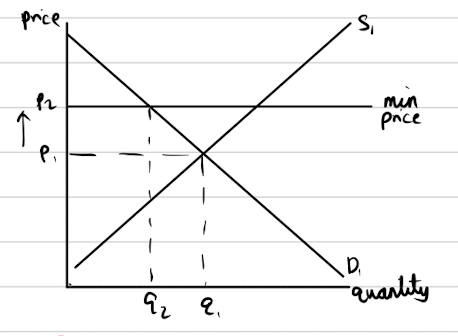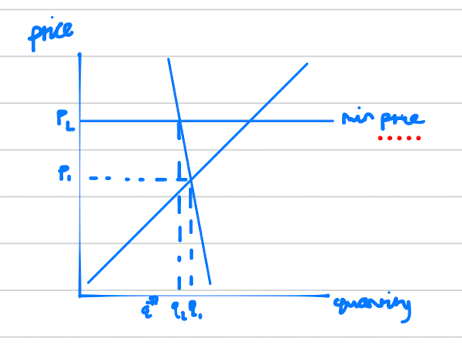A minimum price is a price below which it is illegal to sell a good or service. It is set above the equilibrium price. It can be used to reduce the consumption for demerit goods such as fast food.

The diagram shows that the minimum price causes the price of the good to rise from p1 to p2 and the quantity falls from q1 to q2. The new quantity is closer to the socially optimal quantity, which takes into account the negative externalities when consuming fast food.
However, there is a risk of government failure. This is when government intervention leads to a bigger misallocation of resources than before. One of the reasons this can happen is because the minimum price distorts the market, causing excess supply. At a higher price, there are many firms willing and able to produce fast food and not many people willing and able to buy fast food. This could mean that businesses would lose revenue, and this could also cause them to cut staff, which could cause further externalities - as unemployment, which can lead to anxiety, greater claims of benefits, or even an increase in crime. Alternatively, the government could have imperfect information about the elasticity of demand for the good or service. If fast food is inelastic, which is likely because it is somewhat addictive and costs a small proportion of incomes, then an increase in price is going to lead to just a small decrease in quantity demanded.

The diagram shows that the equilibrium quantity would remain high even after the minimum price, which would be an example of government failure in the form of unintended consequences. Furthermore, firms are able to increase price and increase revenue, which means they are being rewarded for providing unhealthy food. This would be a bad outcome because it would incentivise more production of fast food.